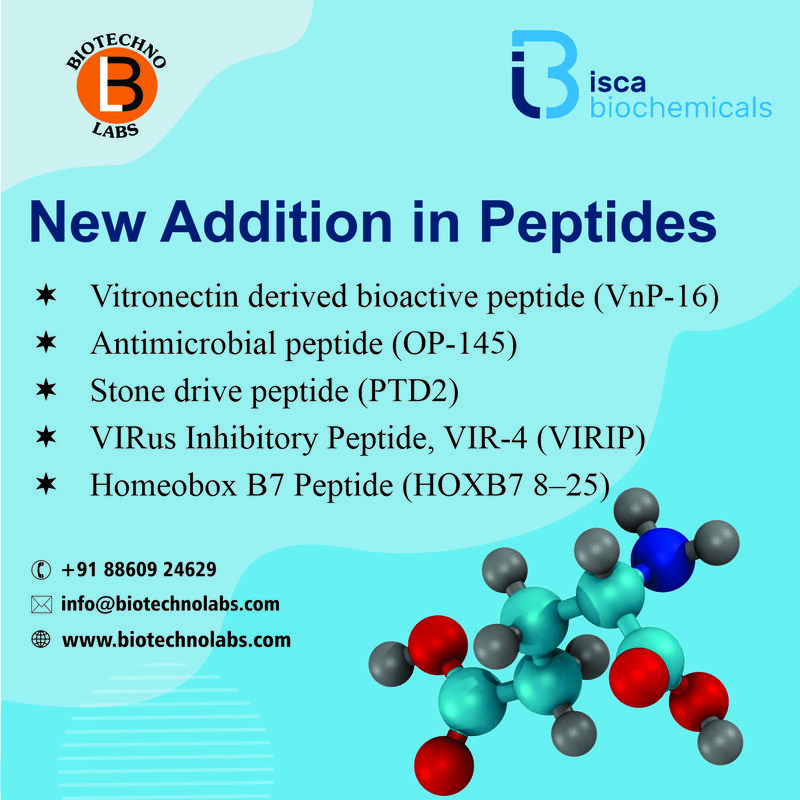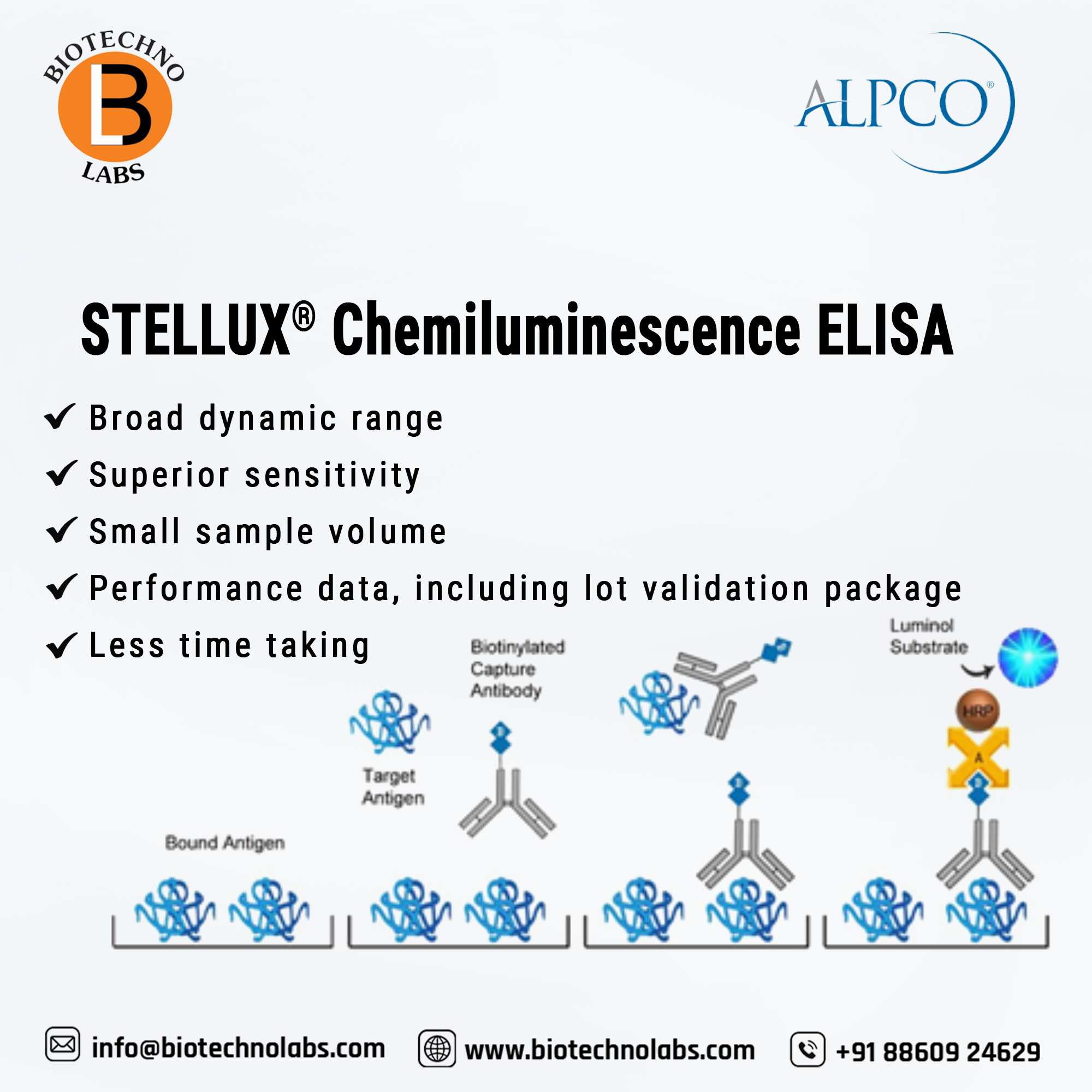
New Addition in Peptides
New Addition in Peptides
A peptide is a short chain of amino acids (typically 2 to 50) linked by chemical bonds (called peptide bonds). A longer chain of linked amino acids (51 or more) is a polypeptide. The proteins manufactured inside cells are made from one or more polypeptides. The benefits of peptides include reducing inflammation, improving immune function, and preventing the formation of blood clots. Research indicates that bioactive peptides may lower high blood pressure and help to kill microbes. Recently, our Principal partner Isca Biochemicals has incorporated 25 new peptides in product catalogue.
Following is the newly added peptide list:
(VIR-4) Endogenous HIV-1 inhibitor, (HOXB7 8-25) Novel Homeobox B7 derivered peptide, (VnP-16) β1 and αvβ3 integrin signaling modulator, (OP-145)Antimicrobial peptide derived from LL-37, (PTD2) WHSC1 inhibitor, (PD-L1Pep-2) Binds to PD-L1, (TAT-HuR-HNS3) HuR-PARP1 interaction blocker, (Tat-braftide) Allosteric BRAF inhibitor, (SMRwt ) Disrupts the Nef-mortalin interaction, anti-metastatic, (Urumin) Antiviral host defense peptide, (Rytvela scrambled peptide) Scrambled control peptide for rytvela, (PDHPS1) YAP signaling pathway inhibitor, ( KLA peptide) Proapoptotic mitochondrial membrane, (FGF7p) FGF7 mimetic , (TIP) TRPV1 inhibitor, (Multi-Leu peptide) PACE4 inhibitor, (Tat-D3S2) DIRAS3 - beclin1 interaction inhibitor, (RS17) CD47 - SIRPα signalling inhibitor, (MOTS-c) AMPK activator, (VGN50) Blocks MYC activation, (Compstatin) C3 convertase inhibitor, (Rb4) Induces expression of HMGB1 and calreticulin, (Q14) USP30 inhibitor, (EPI-X4) Endogenous CXCR4 antagonist, (SAP15) HDAC5 inhibitor, (NP-12) PD-1/PD-L1 interaction blocker & (KP1) Disrupts TGF-β/TβR2 interaction
We, BTL Biotechno Labs Pvt Ltd also supply custom peptides with a wide variety of modifications including N-terminal, C-terminal and side-chain modifications, multiple disulphide bridges, fluorescent labels, D-amino acid and stable-isotope incorporation, biotinylation, glycosylation, post translational modifications and PEGylation.








